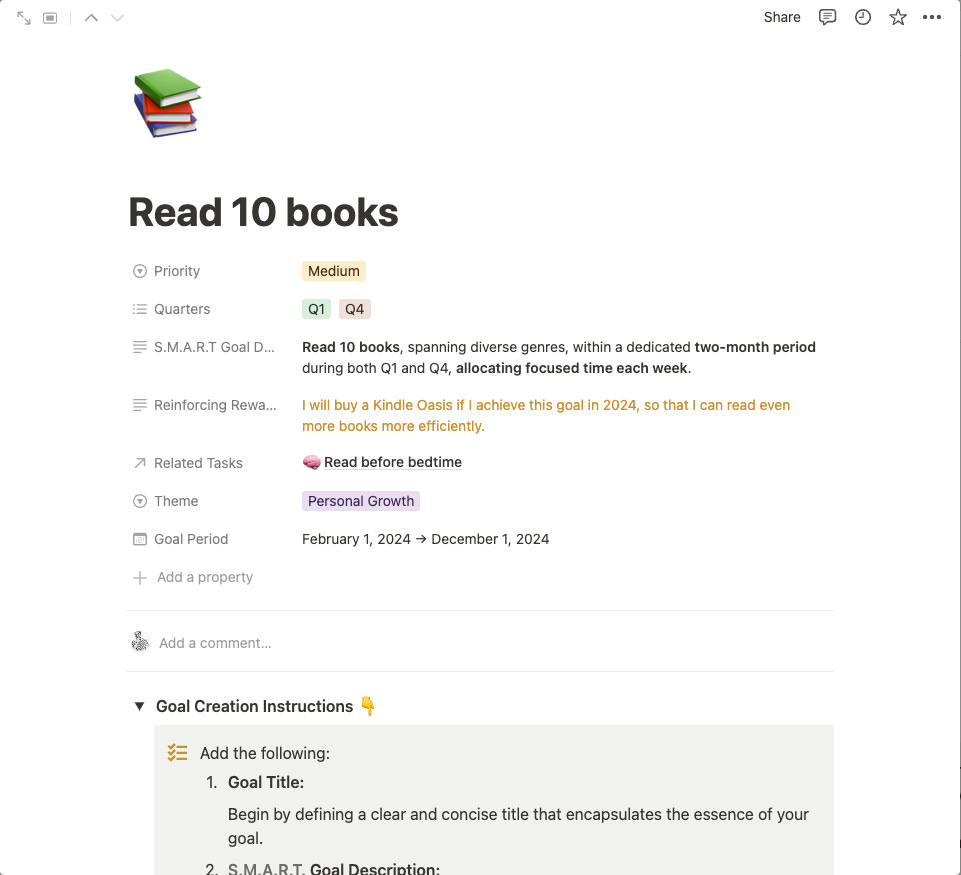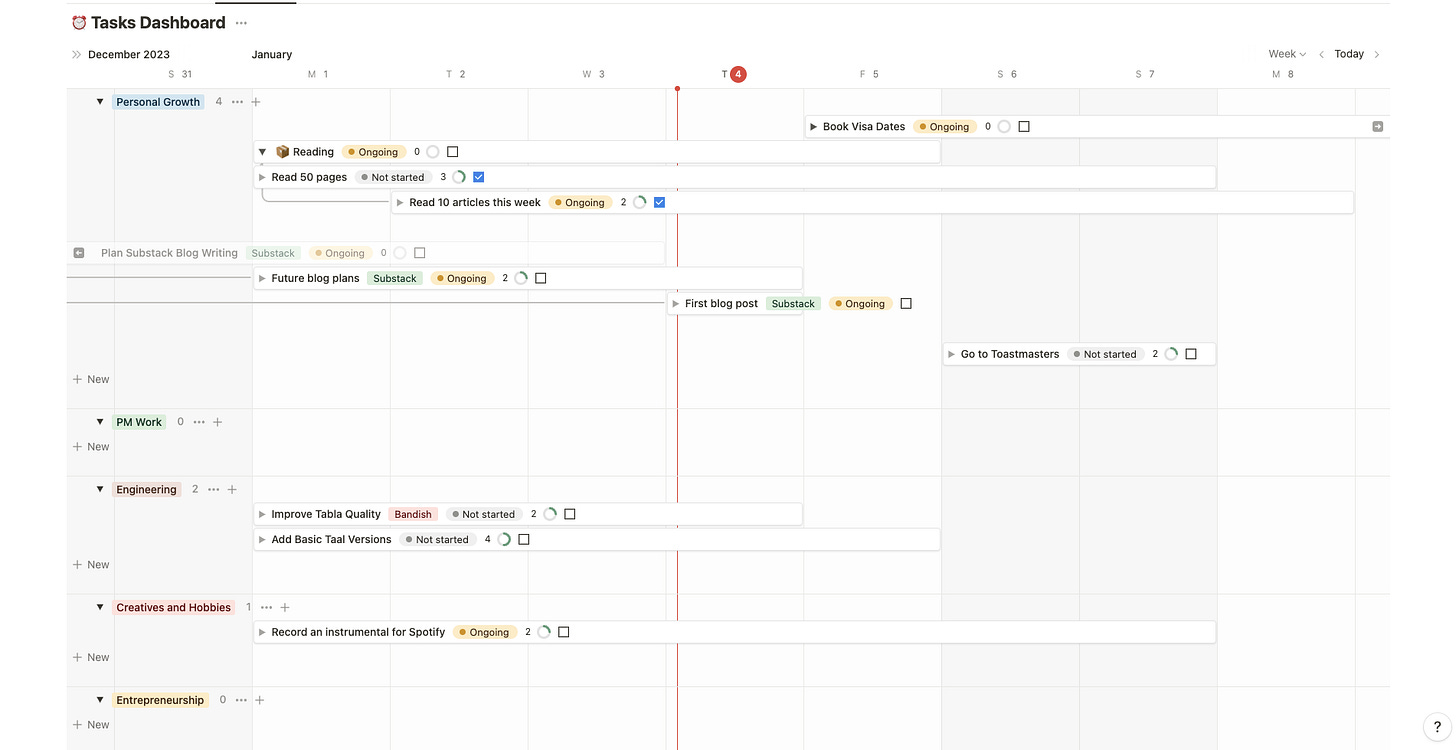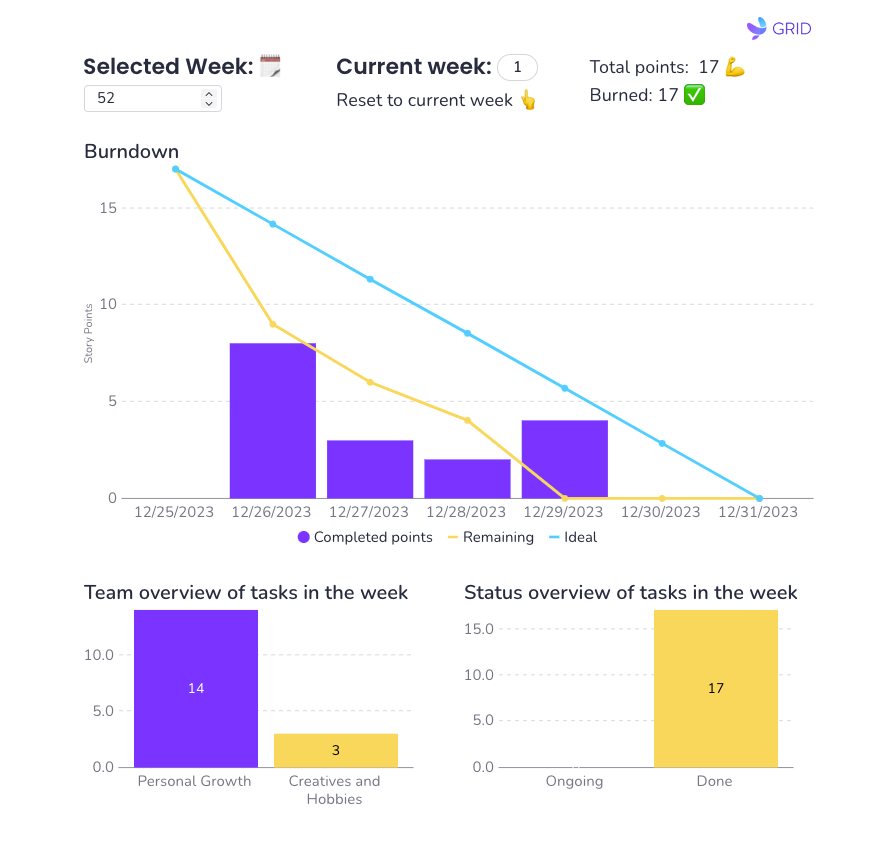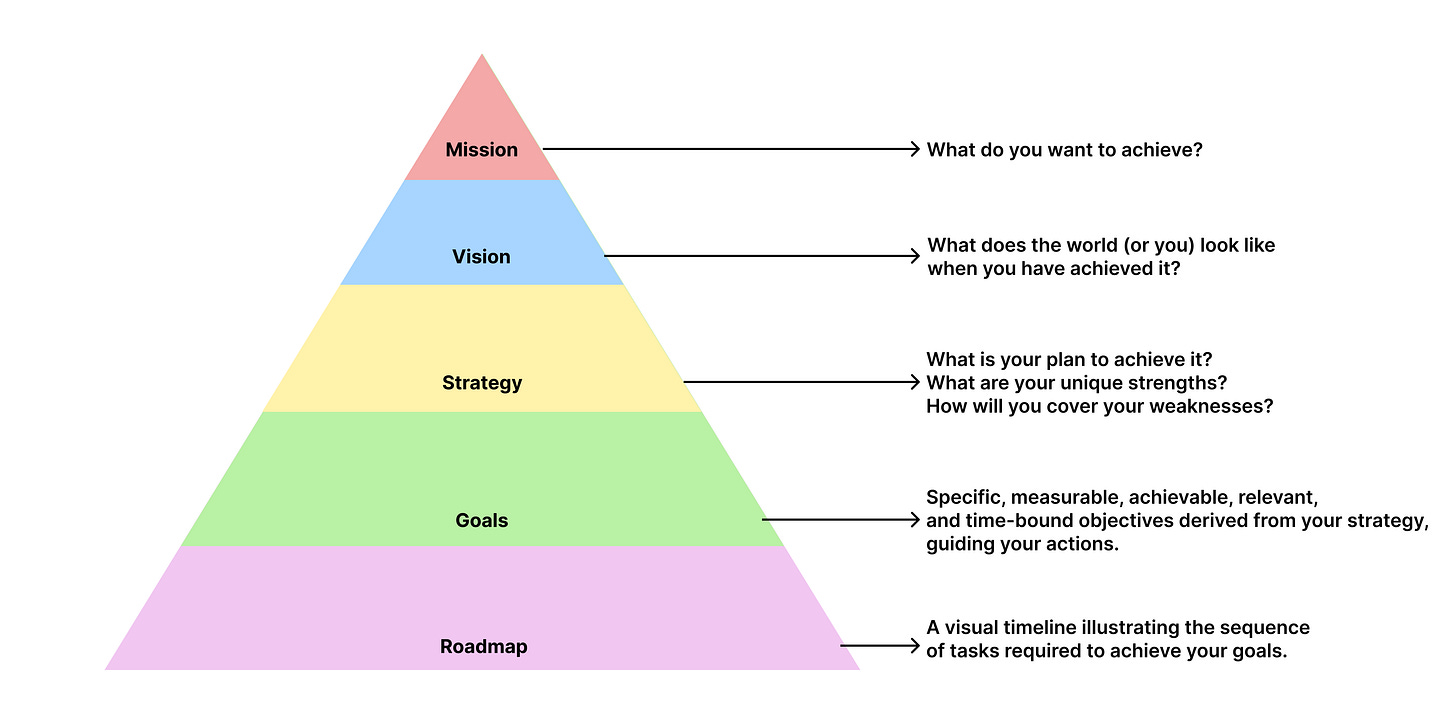Happy New Year, everyone! As the excitement of New Year’s parties subsides and the celebratory haze clears, we’re left with a stark but hopeful reality — it’s time to get to work on the resolutions we’ve set for 2024. As we step into the new year, it’s the perfect moment to reassess and redefine our approach to personal growth. Many of us enter January fueled by aspirations and resolutions, only to find ourselves veering off track as the months roll on. But why settle for this cycle? Today, let’s embrace strategic yearly planning as our tool for transformation, turning the promises made in a moment of festivity into a year of sustained progress and achievement.
The Power of Annual Planning
It might surprise you, but only a minority of people rigorously plan their year. Studies consistently show that those who engage in detailed yearly planning are remarkably more successful in achieving their objectives. The simple act of writing down your goals can significantly amplify your chances of success. And when you go a step further—sharing your goals with friends and providing regular updates—the likelihood of success nearly doubles. This isn’t just about setting goals; it’s about creating a culture of accountability and intentionality. The idea is to embrace the power of planning to navigate the year with purpose and precision.
Why Does Planning Work?
Direction and Clarity: Planning provides a clear direction for your year. It helps you understand what you want to achieve and the steps you need to take to get there. Your hard work requires a clear direction for it to lead you to success. This discussion in Nikhil Kamath’s popular podcast WTF sums this up nicely.
Focus and Prioritization: With so many potential distractions, a plan keeps you focused on what truly matters. It helps prioritize your tasks and manage your time more effectively.
Motivation and Tracking: A plan acts as a roadmap, marking milestones along the way. Each milestone achieved is a boost of motivation, keeping the momentum going.
Adaptability and Learning: A good plan is not rigid. It allows for reflection and adaptation, turning setbacks into learning opportunities for future growth.
Reduces Overwhelm: When faced with a big vision or numerous goals, it’s easy to feel overwhelmed. Planning breaks these larger objectives into smaller, manageable tasks. This segmentation helps reduce anxiety and makes your goals seem more attainable.
Ensures Consistency: Regular planning establishes a routine and habit of productivity. It turns sporadic bursts of effort into a consistent stream of action, which is crucial for long-term success and habit formation.
Why a Structured Process is Key
Have you ever wondered, “Why do I need a process to plan? How difficult can it be?” If so, you’re not alone. The truth is, however, that while setting goals might seem straightforward, the path to achieving them is often laden with unseen obstacles. Without a clear process, planning can quickly become overwhelming or misaligned with our true passions, leading to complex, unsustainable, or poorly executed plans. It’s not just about jotting down aspirations; it’s about crafting a pathway that considers your passions, practical life constraints, and long-term vision, ensuring every step you take is intentional and feasible.
My Journey to Effective Planning
As we delve into the effective yearly planning process, it’s important to note that this isn’t just a static set of steps; it’s a dynamic, evolving strategy that I’ve been refining and enhancing over the last five years. My journey in Silicon Valley — surrounded by professionals and organizations deeply committed to personal growth and meticulous planning — sparked a realization:
If structured processes can significantly boost productivity and goal attainment in a corporate setting, why not apply similar principles to personal planning?
Adopting a company-like approach to my personal goals, I created a blueprint for myself — a process that holds me accountable and systematically drives me toward my objectives. And it has worked wonders for me. Over the years, this process has been my compass, guiding me through various personal and professional landscapes, from mastering a new musical instrument to achieving significant career milestones like promotions and launching my own apps.
This method has been instrumental in maintaining my focus and propelling me toward success across different spheres of life. It’s a testament to the fact that with the right approach, achieving a multitude of goals isn’t just a dream but a tangible reality.
The Process: Overcoming Pitfalls and Achieving Your Goals
So let’s get into the weeds of it. I have divided the process into 7 steps:
Define Your Blueprint
Reflect and Propel Growth
Set Prioritized S.M.A.R.T. Goals
Roadmap Creation
Quarterly Mapping
Adapt and Refine
Prepare for the Next Cycle
Every step of the process is designed to counteract common pitfalls, with strategic solutions, paving the way for a year of growth and achievement.
Before we dive into the nuts and bolts of goal-setting (Step 3), it’s crucial to establish a clear direction. This begins with constructing our foundational blueprint (Step 1) and engaging in thoughtful reflection on the past year (Step 2). These initial steps are vital—they allow us to learn from previous experiences and set goals that are not only clear and targeted but also genuinely attainable and aligned with our deeper aspirations.
Step 1: Define Your Blueprint
How it helps
This structured breakdown from mission to tangible roadmap is crucial because it transforms abstract aspirations into concrete steps. It’s about making the journey from ‘I wish’ to ‘I will’ as clear and actionable as possible, ensuring that every year is a chapter of growth and success.
Just as a product’s success in a company is meticulously planned from concept to execution, so should your life’s objectives follow a detailed roadmap. Drawing inspiration from this popular article from Lenny’s Newsletter, which discusses breaking down product goals into actionable strategies, your life mission too can be deconstructed into a roadmap. This approach ensures that your daily actions are not just random occurrences but deliberate steps towards an overarching goal.
A blueprint is essentially a detailed plan or map for building something significant – in this case, your year. Let’s break down the essentials:
Life Mission - The Why
— Why do you exist?
Start by understanding your core purpose or ‘why’. It’s the underlying drive for all your goals. Think of it like your personal motto or the theme song to your life. This mission provides the resilience and direction you need when the going gets tough.
Mission - Example
“To live a balanced life full of personal growth, meaningful work, and giving back to the community.”
The Life Mission is the core of your blueprint and typically remains consistent, subtly evolving through the years as you grow and gain deeper insights into what drives you. It’s a reflection of your long-term values and purpose, and while it may be revisited, it doesn’t change frequently.
Vision - The What
— What does the world or you look like when you have achieved your Mission?
Envision what you want to achieve in the long run. Your vision is the big picture of your ideal life. It’s the destination you’re working towards, influenced by your mission.
Vision - Example
“I am recognized in my community for my expertise and contribution. I have a healthy work-life balance and actively participate in initiatives that promote growth and well-being for myself and others.”
The Vision is your long-term outlook and can change more significantly as you progress in life and career. It’s advisable to revisit and potentially update your vision annually to ensure it remains aligned with your current aspirations and circumstances.
Strategy - The How
— How do you plan to achieve your vision? How can you leverage your Strengths and mitigate your Weaknesses?
Strategy is your game plan. It outlines the broad steps or approaches you’ll take to turn your vision into reality, aligning closely with your mission and vision.
Strategy - Example
Continue Learning: Regularly attend workshops and seminars related to my field.
Community Involvement: Volunteer and lead local community initiatives.
Personal Well-being: Maintain a regular fitness routine and practice mindfulness to ensure a healthy work-life balance.
Professional Development: Seek out leadership roles in my career and pursue meaningful projects.
Strategy is the most adaptable out of the lot and should be reviewed regularly. As it involves actionable steps towards your vision, it’s responsive to changes in your personal and professional life, as well as the broader context of your industry or community. An annual review, with the possibility of minor adjustments throughout the year, is a practical approach to keeping your strategy fresh and effective.
Step 2: Reflect and Propel Growth
How It Helps
This step addresses the pitfall of repeating past mistakes or not leveraging what works. It celebrates successes, learns from setbacks, and fuels a more effective strategy moving forward.
The second step is to conduct an agile retrospective of the past year’s achievements and challenges to understand patterns and identify areas for improvement. Among the several variations available, I prefer the good-bad-ideas-actions format for its direct relevance to personal planning. The ultimate aim here is not just reflection but transformation—gathering actionable insights that will inform and enhance your goal-setting in Step 3.
It might seem daunting as you attempt to recall an entire year’s worth of experiences, but it’s akin to piecing together a personal ‘Year in Review.’ Here are some strategies to jog your memory and make this exercise more fruitful:
Visual Recollection: Skim through the photos on your phone or your social media posts. These visual cues often bring back memories of significant events, people, and experiences, providing a vivid outline of your year.
Activity Analysis: Reflect on your regular activities and their evolution over the year. For instance, if you’ve been playing tennis every Sunday, consider how your skills have improved or how it has impacted your physical health.
Periodic Retrospectives: The most effective, however, is to do periodic retrospectives, as we will see in Step 6. Conducting periodic retrospectives throughout the year (either monthly or quarterly) can significantly streamline your year-end reflection, offering a ready summary of highs and lows to draw from.
To give you a sense of how this looks in practice, here are examples from my own retrospective for the year 2023:

Step 3: Set Prioritized S.M.A.R.T. Goals
How It Helps
S.M.A.R.T. goals transform the art of aspiration into a science of achievement. They counter the common pitfalls of planning - the vagueness, lack of focus, and motivational drift.
Now we arrive at the heart of our planning journey. This is the step we’ve been gearing up for, the one we all think we know — setting goals. We set goals for the day, the week, the year. But do we really know how to set them effectively? Surprisingly, the answer is often no. This step is where aspirations are sculpted into tangible objectives, where your reflections and blueprint crystallize into actionable goals.
A. Making Your Goals S.M.A.R.T.
Specificity is Key: Vague ambitions like “get fit” or “be happier” are transformed into “run a 5k” or “practice daily gratitude.” Your goals need to be clear and specific.
Measurability Matters: Attach tangible metrics or indicators to each goal to track your progress. Instead of “improve my skills”, try “complete an advanced course in my field.”
Attainability is Essential: Ensure your goals are challenging yet achievable within your current resources and constraints.
Relevance Resonates: Each goal should align with your broader life mission and vision, ensuring they contribute meaningfully to your overall objectives.
Time-Bound for Traction: Assign a deadline or time frame to each goal to create a sense of urgency and focus.
B. Prioritize Your Goals
Once you’ve formulated your S.M.A.R.T. goals, assign them priorities. Consider which goals will have the most significant impact or which are time-sensitive. You might also earmark specific goals for certain quarters, spreading your efforts evenly throughout the year.
C. Positively Reinforcing Rewards
In addition to setting S.M.A.R.T. goals, consider attaching a reinforcing reward to each. As highlighted in this YouTube video by “Better Than Yesterday”, rewards play a crucial role in maintaining motivation and ensuring a positive association with your efforts. Each time you achieve a goal, allowing yourself a meaningful reward can reinforce the behavior and encourage continued progress.
Example
Goal: Run a half-marathon by the end of the year.
Reward: Upon completion, treat yourself to a professional massage or a new pair of running shoes to celebrate your achievement and encourage further running endeavors.
Align Rewards with Goals: Choose rewards that complement the achievement. For instance, if your goal is to finish writing a book, a fitting reward might be a weekend retreat where you can start brainstorming your next project.
Ensure Appropriateness: Rewards should be proportional to the effort and significance of the goal. They should be motivating but not so extravagant that they detract from the goal itself.
Timeliness is Crucial: Provide the reward soon after achieving the goal to strengthen the connection between the accomplishment and the positive outcome.
Here is an example of putting all of this together:

Step 4: Roadmap Creation
How It Helps
Creating a roadmap alleviates the overwhelm by providing a clear plan of action.
Once you have a set of prioritized S.M.A.R.T. goals, it’s time to create a quarterly roadmap. Create a quarterly timeline of your goals, being mindful of your bandwidth and potential seasonal influences that might affect your productivity. Some goals might span multiple quarters or even the entire year, depending on their scope and your capacity. This step is about strategically distributing your efforts throughout the year for balanced and sustained progress.
Step 5: Quarterly Mapping
How It Helps
It mitigates inconsistent efforts and decision fatigue, ensuring that each day you’re working on tasks that directly contribute to your overarching goals, thereby instilling a sense of urgency and structure.
At the start of each quarter, revisit the roadmap you created in Step 4. Consider the goals you’ve assigned for the upcoming quarter and break these down into Tasks — a tangible and an actionable item of work. Also, decide if you want to carry over any overflow tasks from the previous quarter. Then go on to create a weekly timeline of tasks for the different weeks in the upcoming quarter.
This is my timeline for the first week of 2024. These tasks are all connected to one of my goals for the year:

To keep myself motivated and on track throughout the week, I also built a weekly burndown chart that helps me track my performance for every week.

This is, however, totally optional and might take you some time to build.
Step 6: Adapt and Refine
How It Helps
Conducting a quarterly retrospective is pivotal for continuous improvement. It helps you recognize achievements, learn from missteps, and refine your strategies, ensuring that your planning process evolves as you do. Additionally, these regular retrospectives provide a valuable summary of your year, making the next year-end reflection (Step 2) more informed and efficient.
As each quarter concludes, take time for a retrospective. Assess what you’ve accomplished against your goals and understand areas needing improvement. Reflect on the successes and challenges, and adjust your roadmap and tasks for the upcoming quarter accordingly. This cycle of reflection and adjustment ensures that your planning remains dynamic and responsive to your changing needs and circumstances.
I’ve discovered that using this time as an opportunity for a brief retreat, akin to Bill Gates’ “Think Week”, can be incredibly beneficial. Driving to a nearby town for a weekend provides not just the perfect setting for my quarterly retrospectives but also a chance for solitude and recalibration. This practice offers a much-needed break from the daily grind, allowing me to reflect deeply on the past quarter’s journey and plan the next steps in a fresh, rejuvenated state.
Step 7: Prepare for the Next Cycle
How It Helps
Engaging in this annual reflection helps you stay aligned with your true self and adapt to life’s inevitable changes. By iteratively revisiting and refining your plan, you create a more effective, personalized path to achieving your goals, ensuring that with each passing year, you’re moving closer to the life you envision
At the end of the year, engage in a deep reflection of your journey, assessing the achievements, challenges, and lessons learned. Revisit your life mission, vision, and strategy (Step 1) to see if they still resonate or need adjustments based on the year’s experiences. Then, prepare to repeat the process for the next year, taking the insights gained from this cycle to refine and enhance each subsequent step (Steps 2-6).
Bonus: Empowering Your Journey with Tools and Insights
Having outlined a detailed process for strategic planning, you might wonder, “How do I actually implement these steps?” or “Where do I even begin to write and track my plan?” These are critical questions because the effectiveness of your planning hinges on its accessibility and practicality.
Where to Write Your Plan
You could write your plan anywhere — a yearly planner, a diary, or a digital document. The key is to choose a medium that is easily accessible and one that you can revisit every day without much resistance. Consistency and ease of access are paramount. Whether it’s the tactile feel of pen and paper or the convenience of digital notes, select a tool that fits into your daily routine and makes the act of planning, tracking, and reflecting a seamless part of your life.
Choosing the Right Tool for Planning
For me, all of my life notes are on Notion, which I use as my second brain. My yearly planner is also on Notion because it streamlines my time and thought process, and I can just replicate my last year’s template for the current year saving a lot of time. With Notion, I can quickly jot down retrospectives, create a visual timeline of tasks, and manage my daily agenda with ease. It allows for flexibility and creativity in organizing my life, acting as a central hub for all my planning needs.
Sharing My Personal Year Planning Template
This year, I’ve decided to share the very Notion template that has been instrumental in my planning success over the past five years. I believe this template can significantly benefit others in crafting a thoughtful, strategic plan for their year. Having experienced great results personally, I’m excited to offer this tool to help you streamline your planning process and set yourself up for a year of growth and achievement.
As a token of appreciation for joining me on this journey, I am offering my readers an exclusive 50% discount on this Notion template. This offer is only available until the end of the month, so don’t miss the opportunity to empower your planning with a tool tailored for success. Download the template by clicking on the button below 👇
Conclusion: Your Year of Transformation
As we embark on 2024, let’s change the narrative. With a clear, strategic approach to yearly planning, you’re not just setting goals; you’re paving a path to real, tangible achievements. Let’s make this year count with focus, strategy, and a bit of fun along the way.
Here’s to a year of growth, achievement, and continued learning!
What did you think of this post? Do you plan every year? How did you go about your 2024 planning? What tools did you use? Tell me all about it in the comments.



This is pure gen just discovered this thanks a lot you gave me whole new perspective i am looking forward to future update from your side!!!